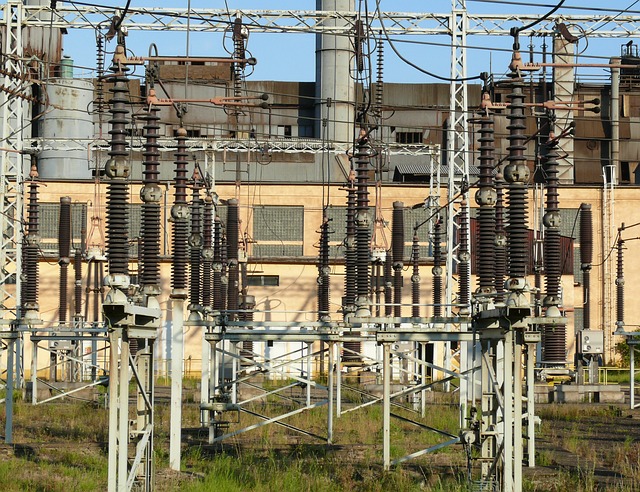Efficient Clash Resolution: Optimizing Underground Utility Infrastructure Design

Underground utility infrastructure design is a critical aspect of modern city development, ensuring…….
In the ever-evolving urban landscape, efficient and sustainable infrastructure is the backbone of thriving cities. At its core, Utility Mapping and Network Design plays a pivotal role in transforming raw landscapes into vibrant metropolises by meticulously planning and integrating critical utility systems. This comprehensive guide delves into the intricate world of utility mapping, exploring its historical roots, global impact, technological innovations, and the challenges it faces. By understanding the principles and practices within this domain, we can unlock the potential for smarter, more resilient cities, ensuring a sustainable future for generations to come.
Utility mapping is a specialized discipline that involves creating detailed digital representations of an urban area’s underground infrastructure network. This process encompasses the mapping of various utilities such as water pipes, sewer lines, electrical cables, gas mains, telecommunications networks, and more. Network design, on the other hand, focuses on planning and organizing these utility systems to ensure optimal performance, reliability, and future expansion.
Core Components:
Historically, utility mapping has evolved from traditional hand-drawn maps to advanced digital technologies. The early 2000s marked a significant shift with the adoption of Geographic Information Systems (GIS) software, enabling more accurate, scalable, and collaborative mapping practices. Today, this field continues to advance with real-time data integration, machine learning algorithms, and the Internet of Things (IoT), revolutionizing how cities manage their underground assets.
The influence of utility mapping and network design is a global phenomenon, shaping urban development across continents. Each region has its unique context, but several common trends emerge:
| Region | Key Trends | Notable Initiatives |
|---|---|---|
| North America | Digital transformation is leading to the adoption of smart city technologies, with cities like New York and Los Angeles investing in advanced utility mapping systems. | The Smart Cities Challenge, funded by federal grants, encourages municipalities to leverage data and technology for improved urban services. |
| Europe | There’s a growing emphasis on sustainability, with many European cities prioritizing green infrastructure and renewable energy networks. | The EU’s Digital Europe program promotes the use of digital technologies, including utility mapping, for efficient resource management. |
| Asia Pacific | Rapid urbanization presents challenges and opportunities. Cities like Singapore and Tokyo are leading in integrated utility network design to support dense populations. | China’s “Smart City Pilot Project” aims to transform major urban centers with advanced infrastructure, including comprehensive utility mapping. |
| Middle East & Africa | The region is witnessing significant investments in infrastructure development, particularly in new city projects. | Dubai’s Smart City initiative includes a digital twin of the city, utilizing utility mapping for efficient resource allocation. |
These global trends highlight the dynamic nature of urban planning and the increasing demand for sophisticated utility mapping and network design solutions.
The economic aspects of utility mapping and network design are multifaceted, impacting various sectors:
Technological breakthroughs have revolutionized the field of utility mapping and network design:
The development of utility mapping and network design is guided by a web of policies and regulations:
Despite its transformative potential, the field faces several challenges:
Looking ahead, the future of utility mapping and network design promises exciting possibilities:
Utility mapping and network design are not just technical disciplines; they are catalysts for shaping sustainable, intelligent cities. By embracing technological advancements, fostering collaboration, and adopting innovative practices, urban planners and engineers can unlock the full potential of this field. As cities continue to grow and evolve, the role of utility mapping will remain pivotal in ensuring a bright and resilient future for our metropolises.

Underground utility infrastructure design is a critical aspect of modern city development, ensuring…….

Pipeline and conduit networks, critical components of utility infrastructure design, require meticul…….

Water and sewer network design faces increasing pressure from global urbanization, demanding efficie…….

Utility mapping, leveraging Geographic Information Systems (GIS) technology, revolutionizes critical…….

Stormwater management, crucial for sustainable urban development, leverages Sustainable Drainage Sys…….

Underground utility mapping is a critical tool for designing efficient stormwater and sewer networks…….

Utility infrastructure design is a multifaceted process that involves meticulous planning and collab…….

Utility mapping, traditionally hindered by manual data collection, is revolutionized by Building Inf…….

Underground utility networks, often overlooked but critical to modern cities, present complex challe…….